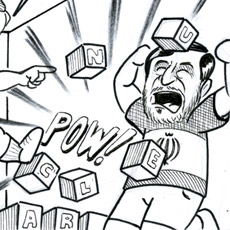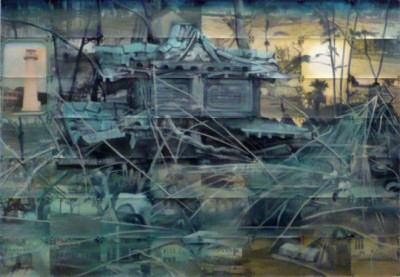
The inaugural exhibition at the DePaul Art Museum “Re: Chicago,” which closed on March 4, was yet another reminder of the cultural ambiguities facing Chicago as a “second tier city.” The pristine whiteness of the museum walls displayed the work of forty Chicago-based artists from the past hundred-fifty years although the ambitiousness of the scope is tamed through medium and scale — “Re:Chicago” was anything but radical. With few exceptions, it was a show of paintings by Chicago-based artists internationally well-known, locally prominent — and then some of both and neither.
For the selection, the curator asked “leading figures in the Chicago art world” to recommend an artist who “is famous, who used to be, or who ought to be” famous. These “leading figures in the Chicago art world” were also the writers of the Yelp-like labels that accompany the works. Needless to say, this curatorial approach to the art and its exhibition prosthetics is problematic, if not outright objectionable.
Apparently curated for a general audience, the individual pieces were strong, but never challenging. There is a signature work “Untitled (Painter),” 2010, by Kerry James Marshall of a painter posing for an unfinished, pink portrait of himself. Equally representative was a series of black-and-white photographs by the beloved Harry Callahan, one of which captures his longtime wife and muse, Eleanor, in water. Karl Wirsum, an SAIC faculty member and member of Chicago’s The Hairy Who art-group, was represented by a 1970’s pop-infused, bright acrylic-on-wood sculpture of a man playing tennis. In a small corner room of the museum was Robert Davis and Michael Langlois installation “Living The Dream (2011).” With red walls, homage prints to László Moholy-Nagy, and a wooden black construction of a broken-up frame in the center, the installation seemed more like necessary filler for some site-specific work requirement, and also arguably the weakest work in the show.

Outside of the actual work represented, the exhibitions begs a conversation about the role of Chicago as an art center. There could never be a “Re:New York” show of such time-scale, and for completely opposite reasons, there could never be a “Re:Boston” ( well, there could, but who would go to it?). Thus “Re:Chicago” re-affirms the peripherality of Chicago, reinforcing this unfavorable position of the city within the national art community. Without question, the works on display are important, but somehow framing it as “Chicago” seems undignified and passé in the way that an exhibition of “Contemporary art from China” is tainted with that neo-colonialist otherness. These Chicago artists’ work would be better represented as part of a permanent collection of a major institution — giving it more dignity and de-problematizing its marginality.
DePaul Art Museum
935 W Fullerton
Chicago IL 60614
museums.depaul.edu/







